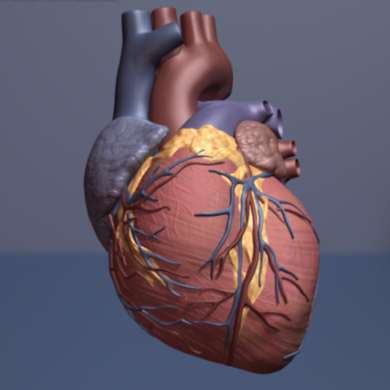What you need to know about mitral valve disease

There are certain matters of the heart that should be left to the experts, and mitral valve disease is one of them. Dr. Joseph Lamelas, associate chief of cardiac surgery in the Michael E. DeBakey Department of Surgery at Baylor College of Medicine, gives some insight into the disease and its treatment.
"Inside the heart, there are valves that regulate blood flow to and from the heart, and these valves are like doors – they have to open and shut completely during each cardiac cycle. Each time the heart beats, the valve opens and each time the heart relaxes, the valve closes," Lamelas said. "For some people, however, these valves don't work as they should."
The mitral valve is located between the left atrium and left ventricle of the heart, and mitral valve disease refers to any irregular conditions related to this valve. Two of the most common types of mitral valve disease are mitral valve stenosis and mitral valve regurgitation.
Mitral valve stenosis
Mitral valve stenosis is defined as the narrowing of the mitral valve, meaning that it does not open or close properly, which affects blood flow. It is most often caused by rheumatic fever, which is usually caused by a strep infection.
Mitral valve regurgitation
When the mitral valve does not open and close properly, there is a chance of having a more significant leak in the valve, meaning the blood flows backward through the valve, which is referred to as mitral valve regurgitation. Over time if there is no intervention, this can lead to heart failure because the heart starts to grow and its pumping function diminishes, causing the heart to work overtime.
"Interestingly, most patients tolerate the leaking initially, and many patients could be walking around with severe mitral regurgitation and do not have symptoms. It's difficult to convince somebody who doesn't have symptoms that they need surgery, but we know that if you operate on those patients who have a severe leak in the valve, even without symptoms, their long-term survival rate will be equivalent to somebody in their age group that didn't have the condition," Lamelas said.
Symptoms of mitral valve regurgitation include fatigue and shortness of breath.
"Some patients will tell you that they feel well, but in fact they adjust or change their lifestyle in order to compensate. As they begin to experience shortness of breath when walking, instead of walking at a regular pace, they will walk slower. Many don't realize this until they are carefully questioned," he said.
For those diagnosed with a mild or moderate leak in the valve, it's important to have an echocardiogram done every six months and to follow up to measure the leakage and the function of the heart.
Treatment
Each of these problems can be handled optimally through a minimally invasive approach. Lamelas, a pioneer in the field of minimally invasive heart procedures, can repair these conditions without splitting the sternum. The procedure entails a small incision on the right side of the chest, working between the ribs with specialized equipment and instruments to access the valves. This minimally invasive approach allows for a shorter hospital stay as well as a quicker recovery period.
Lamelas has played a significant role in advancing this field and has even played a role in the development of facilitating and exposure instruments.
He emphasized the importance of early intervention for severe mitral valve regurgitation, noting that as the leak progresses, the heart begins to grow larger and becomes weaker. The other chambers of the heart can enlarge, especially the left atrium, and this can lead to atrial fibrillation, or an irregular heart rate. This can potentially lead to the development of clots in the heart and a subsequent stroke if not treated.
"Those patients with atrial fibrillation plus a leak in the valve need to go to surgery sooner rather than later, and this can also be addressed through a minimally invasive procedure," he said.
Close medical follow up is extremely important once a defect in any heart valve is identified.
















